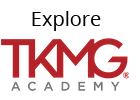

“In the unsexy tedium of daily operations, consistency is key.”
This is a line from p. 107 of my new book, The Outstanding Organization. As I’ve been giving book-related talks, receiving emails from readers, and working with clients on the journey to becoming Outstanding, this is the organizational behavior that people are questioning the most.
But, but, but.
None of these fears—and make no mistake about it, they are fears—are grounded in reality. Well-designed standard work creates tremendous organizational flexibility and frees people to innovate and provide greater customer value—both of which are deeply satisfying—because they don’t have to spend their time figuring out how to get work done, nor fighting the chaos that arises when organizations lack the discipline necessary to achieve consistent performance.
Done well, standard work, allows MORE creativity and produces GREATER organizational flexibility, not less.
Unfortunately very few organizations have any level of discipline in how their processes are designed and how they operate on a daily basis. Nothing is documented. Or if they’re documented, they’re not followed. The problems with having no disciplined process to getting work done are numerous:
Organizations that continue to operate without a disciplined approach to daily operations will forever create the type of self-inflicted chaos that robs them of the energy they need to innovate and serve customers better. It’s an ineffective and inefficient way to operate. Worse, it sucks the life-force out of its employees who scramble to do work in a fire-laden, unpredictable environment.
Discipline is the opposite of what we think. It’s freeing. It’s liberating. It enables innovation. Which environment do you want to work in?
This is the why. To learn how, attend next week’s webinar, We’ve Had It All Wrong: Manage Processes, Not People or buy my other new book co-authored with Mike Osterling, Metrics-Based Process Mapping: Identifying and Eliminating Waste in Office and Service Processes.
And to learn more about infusing discipline boosts employee engagement (and the other two key behaviors: clarity and focus), pick up a copy of The Outstanding Organization.